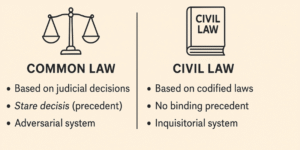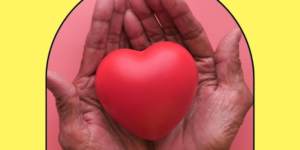Human thought processes are not always logical or objective; they are shaped by cognitive biases and thinking traps that distort perception and reasoning. These mental shortcuts, while evolutionarily adaptive for quick decision-making, can lead to significant errors in judgment and emotional distress (Beck, 1976; Kahneman, 2011). The concept of thinking traps—also known as cognitive distortions—was first systematically identified in Cognitive Behavioural Therapy (CBT) by Aaron Beck and later expanded by David Burns (Burns, 1980). These distortions represent habitual patterns of thought that reinforce negative emotions and maladaptive behaviours. Understanding and addressing them is critical for psychological resilience, interpersonal effectiveness, and rational decision-making.
This essay explores twelve common thinking traps and integrates insights from psychological research, clinical practice, and educational sources. Each trap will be analysed alongside strategies to mitigate its effects, supported by empirical evidence and examples.
1.0 Always Being Right
The need to be right often stems from ego defence mechanisms—an unconscious drive to protect one’s self-concept from perceived threats (Freud, 1937). Individuals trapped in this pattern prioritise winning arguments over truth, leading to interpersonal conflict and rigid thinking. Beck (2011) described this as a manifestation of cognitive rigidity, which limits adaptive functioning.
Counterstrategy: Developing intellectual humility—the recognition that one’s beliefs may be fallible—can counteract this trap (Krumrei-Mancuso & Rouse, 2016). Encouraging open dialogue and seeking alternative viewpoints fosters understanding rather than validation.
2.0 Black-and-White Thinking
Also known as dichotomous thinking, this distortion involves perceiving situations as all good or all bad, with no shades of grey (Beck, 1976). It is common in individuals with mood disorders such as borderline personality disorder and depression (Rnic et al., 2016). For example, a student who receives a B grade may see themselves as a total failure.
Counterstrategy: Cognitive restructuring—used in CBT—helps individuals identify and challenge extreme dichotomies by recognising the continuum of possibilities (Beck, 2011). Viewing performance or relationships along a gradient fosters balanced judgement.
3.0 Catastrophising
This trap involves anticipating the worst-case scenario without sufficient evidence. Catastrophising amplifies anxiety and stress responses, often leading to avoidance behaviours (Garnefski & Kraaij, 2006). For instance, someone fearing public speaking may assume they will completely fail and embarrass themselves.
Counterstrategy: Using probabilistic reasoning—asking “What is the most likely outcome?”—helps reframe unrealistic fears. Mindfulness-based therapies have also proven effective in reducing catastrophic thinking by promoting present-moment awareness (Hofmann et al., 2010).
4.0 Emotional Reasoning
Emotional reasoning occurs when individuals treat their feelings as factual evidence. For example, “I feel guilty; therefore, I must have done something wrong.” As Burns (1980) explained, emotions are valid experiences but unreliable indicators of objective truth.
Counterstrategy: Recognising emotions as information, not proof enables individuals to separate feelings from facts. Emotional regulation techniques, such as cognitive reappraisal and mindfulness, are shown to mitigate this distortion (Gross, 2015).
5.0 Fallacy of Change
This trap reflects the belief that others must change for one’s happiness. It often leads to frustration in relationships, as individuals externalise control (Ellis, 1962). The locus of control theory (Rotter, 1966) suggests that those with an external locus tend to feel helpless when others do not meet expectations.
Counterstrategy: Shifting focus to self-regulation—recognising that one can only control personal responses—enhances empowerment and acceptance (Deci & Ryan, 2000).
6.0 Filtering
Filtering involves focusing solely on negative aspects of a situation while ignoring positives. It reinforces pessimism and depressive cognition (Gotlib & Joormann, 2010). For instance, an employee may fixate on a single critique during a performance review, overlooking multiple compliments.
Counterstrategy: The three-column technique—listing negatives, positives, and neutral facts—helps restore cognitive balance (Burns, 1980). Gratitude journaling has also been empirically shown to reduce negative filtering (Emmons & McCullough, 2003).
7.0 Fortune Telling
The illusion of predictive certainty—especially negative outcomes—is a hallmark of anxiety disorders (Clark & Beck, 2010). Individuals may believe, “I know this will go wrong,” despite lacking evidence.
Counterstrategy: Adopting a present-focused mindset counters unproductive forecasting. Techniques like grounding and exposure therapy teach tolerance of uncertainty (Carleton, 2016).
8.0 Jumping to Conclusions
This distortion entails making snap judgements without sufficient information, often leading to misinterpretation or conflict (Gilovich, Griffin & Kahneman, 2002). For example, assuming a friend is angry because they didn’t reply quickly.
Counterstrategy: Employing critical thinking and information gathering before reacting is essential. The Socratic questioning method used in CBT promotes reflective reasoning and reduces impulsive conclusions (Overholser, 2013).
9.0 Mind Reading
Mind reading involves assuming one knows what others are thinking—usually negative interpretations (Beck, 2011). This bias impairs communication and fosters insecurity in relationships.
Counterstrategy: Practising assertive communication and seeking feedback clarifies intentions and reduces projection errors (Linehan, 1993).
10.0 Overgeneralisation
Here, a single negative event is perceived as evidence of perpetual failure. For instance, “I failed once, so I’ll always fail.” Overgeneralisation sustains learned helplessness (Seligman, 1975) and depression (Beck, 1976).
Counterstrategy: Identifying exceptions to the rule challenges the universality of such beliefs. CBT encourages evidence-based evaluation to promote resilience.
11.0 Personalisation
This trap occurs when individuals blame themselves excessively for events beyond their control. It reflects an inflated sense of responsibility often seen in perfectionists and people with depression (Burns, 1980).
Counterstrategy: Recognising the multi-causal nature of events helps distribute responsibility more realistically. Self-compassion training reduces personalisation and enhances psychological well-being (Neff, 2011).
12.0 “Should” Statements
“Should” statements impose rigid moral or behavioural expectations, leading to guilt or frustration when unmet. For example, “I should always be productive.” Such perfectionistic cognitions correlate with burnout and low self-esteem (Flett & Hewitt, 2002).
Counterstrategy: Reframing “should” into “could” introduces flexibility and self-acceptance. Acceptance and Commitment Therapy (ACT) uses values-based language to replace rigid self-demands (Hayes et al., 2012).
Practical Strategies to Overcome Thinking Traps
The infographic suggests practical cognitive tools to counter distortions:
- Reframing your thinking: Transforming negative interpretations into constructive alternatives (Beck, 2011).
- Pause and reflect: Allowing space between thought and reaction mitigates impulsivity (Kabat-Zinn, 1990).
- Ask for evidence: A CBT core skill that tests the factual basis of automatic thoughts (Burns, 1980).
- Stay present: Mindfulness interventions strengthen awareness and emotional regulation (Hofmann et al., 2010).
These strategies are empirically validated to reduce anxiety, depression, and maladaptive coping patterns across diverse populations.
Thinking traps represent deeply ingrained cognitive distortions that shape how individuals interpret and respond to the world. While such shortcuts are part of human cognition, they can distort reality, fuel emotional distress, and impair decision-making. However, through self-awareness, cognitive restructuring, and mindfulness, individuals can challenge these biases and cultivate balanced, adaptive thinking. As Beck (2011) affirmed, “Reality, when accurately perceived, is rarely as dire as imagined.” Recognising and countering thinking traps is not merely a psychological exercise—it is an essential step towards emotional intelligence, rational thought, and psychological freedom.
References
Beck, A. T. (1976). Cognitive Therapy and the Emotional Disorders. New York: International Universities Press.
Beck, J. S. (2011). Cognitive Behavior Therapy: Basics and Beyond. 2nd ed. New York: Guilford Press.
Burns, D. D. (1980). Feeling Good: The New Mood Therapy. New York: HarperCollins.
Carleton, R. N. (2016). Into the unknown: A review and synthesis of contemporary models involving uncertainty. Journal of Anxiety Disorders, 39, 30–43.
Clark, D. A., & Beck, A. T. (2010). Cognitive Therapy of Anxiety Disorders. New York: Guilford Press.
Deci, E. L., & Ryan, R. M. (2000). The “what” and “why” of goal pursuits: Human needs and self-determination. Psychological Inquiry, 11(4), 227–268.
Emmons, R. A., & McCullough, M. E. (2003). Counting blessings versus burdens: An experimental investigation. Journal of Personality and Social Psychology, 84(2), 377–389.
Flett, G. L., & Hewitt, P. L. (2002). Perfectionism and maladjustment. American Psychological Association, 31–67.
Garnefski, N., & Kraaij, V. (2006). Cognitive emotion regulation strategies and depressive symptoms. Personality and Individual Differences, 41(6), 1045–1053.
Gross, J. J. (2015). Emotion regulation: Current status and future prospects. Psychological Inquiry, 26(1), 1–26.
Hofmann, S. G., et al. (2010). The effect of mindfulness-based therapy on anxiety and depression. Journal of Consulting and Clinical Psychology, 78(2), 169–183.
Kahneman, D. (2011). Thinking, Fast and Slow. London: Penguin.
Krumrei-Mancuso, E. J., & Rouse, S. V. (2016). The development and validation of the Intellectual Humility Scale. Journal of Personality Assessment, 98(2), 209–221.
Linehan, M. (1993). Cognitive-Behavioral Treatment of Borderline Personality Disorder. New York: Guilford Press.
Neff, K. D. (2011). Self-Compassion: The Proven Power of Being Kind to Yourself. New York: HarperCollins.
Rnic, K., et al. (2016). A meta-analysis of cognitive biases in depression. Journal of Abnormal Psychology, 125(8), 1078–1092.
Seligman, M. E. P. (1975). Helplessness: On Depression, Development, and Death. San Francisco: W.H. Freeman.









